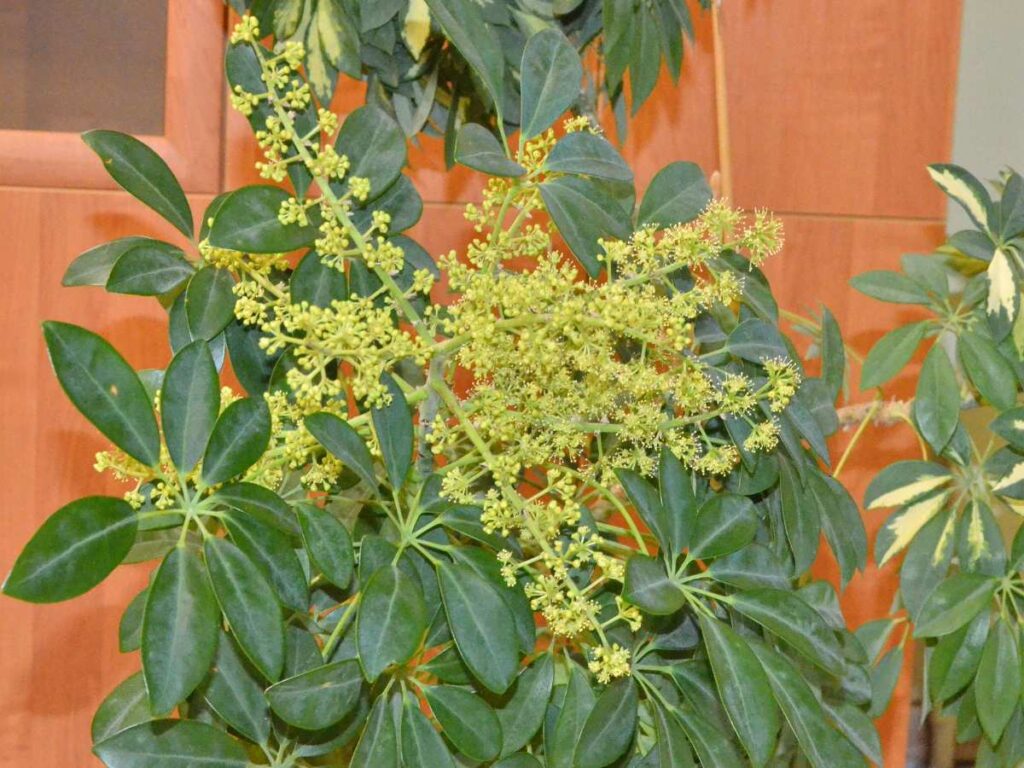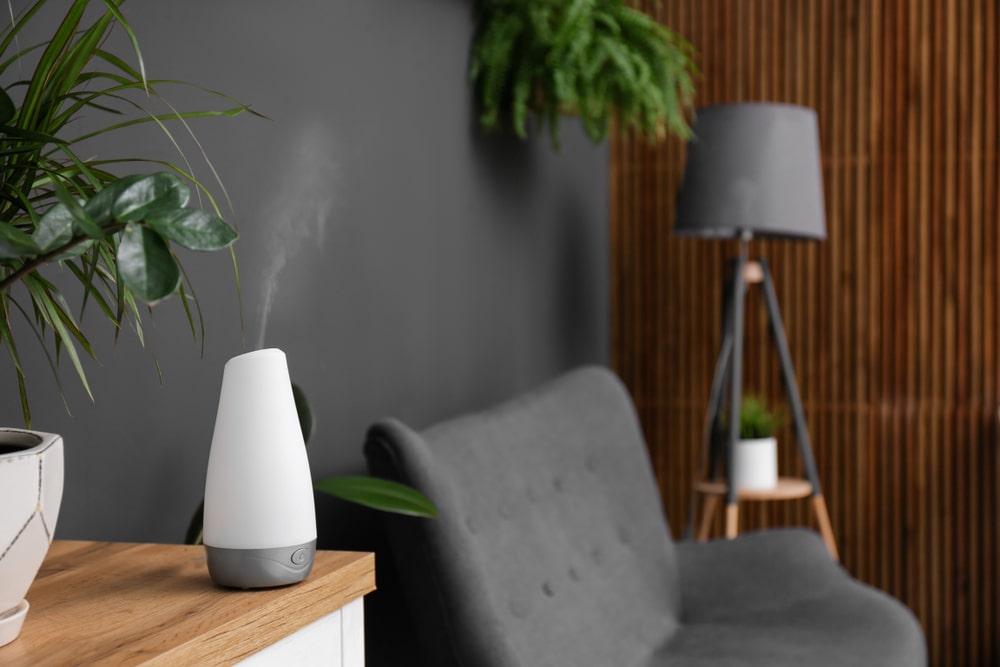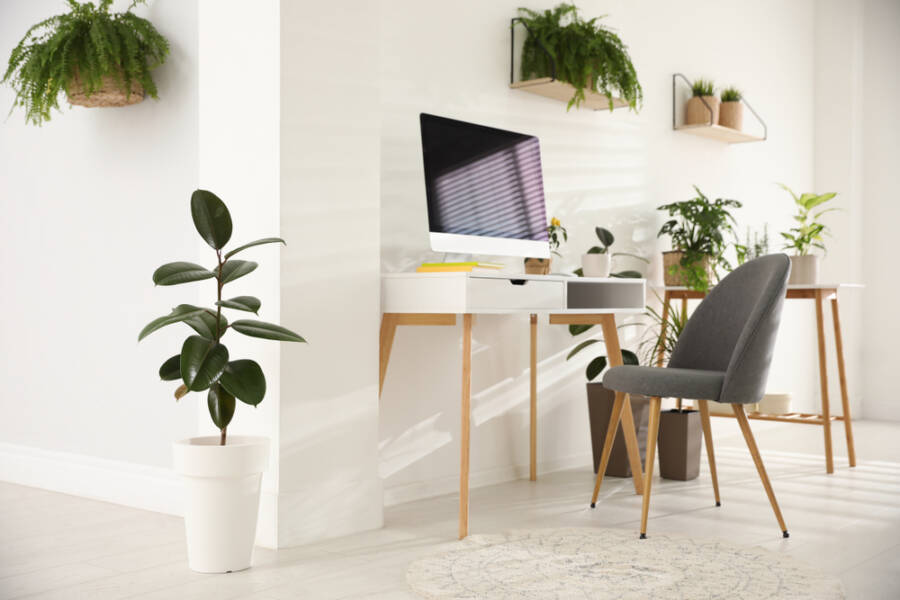From its name alone, you’d expect the umbrella plant (Schefflera) to have a blooming display that would put any flower garden to shame. But like so many things in life, appearances can be deceiving – does this seemingly delicate and beautiful houseplant bloom?
Let’s dive into the answer and find out if the umbrella plant is as lovely as it looks.
Here’s Does Umbrella Plant Bloom?
The umbrella plant, or Schefflera arboricola, is native to moist, shady streamsides in California and Oregon. It can bloom indoors with enough sunlight, but it rarely does so when grown indoors. In the wild, it blooms with pink or white flowers in early spring.

How Do I Get My Umbrella Plant to Flower?
Schefflera plants have become popular for their ornamental qualities and exotic appearance. They don’t flower outdoors naturally. It’s possible to make them bloom indoors if you provide them with the right conditions.
To achieve this feat of horticultural magic, you’ll need plenty of light and moisture. And some tender loving care!
Ensure your umbrella plant has access to bright but indirect sunlight during the daytime hours. You can invest in artificial grow lights if necessary.
Make sure temperatures stay between 16-20 degrees Celsius (60-68 F) too. Any higher will cause wilting leaves and poor growth rates.
Caring for your Schefflera requires regular watering and fertilization throughout its growing season. From April through September – so be sure to keep up with those tasks regularly.
With all these elements in place, watch as your beloved houseplant bursts forth with vibrant blooms!
How Long Does It Take Umbrella Plants to Bloom?
Most people find that their plant may start flowering after two or three years.
During this time, regular fertilizing with a balanced fertilizer should be done. As well as providing plenty of indirect light and moisture.
Pruning also helps promote healthy growth, which may result in larger flowers when the time comes for the plant to bloom.
Some varieties of umbrella plants have been bred specifically for their flower production. These tend to bloom sooner than others.
Suppose you’re looking for quicker results from your houseplant. One of these cultivars could work better than traditional varieties. Though bear in mind they need just as much care and attention!
Different Colors of Umbrella Plant Blooms
The vibrant hues of umbrella plant blooms add beauty and serenity to gardens. From bright yellow to deep purple, the Schefflera flowers provide a range of colors that captivate anyone’s eye. Let us explore these different shades in more detail:
First, we have yellows ranging from pale lemon to goldenrod. These small yet cheerful petals bring an air of sunshine into any environment.
The next hue is green; this can be seen as anything from light lime to forest-like emeralds. Not only do they blend well with their surroundings, but they also make for a stunning contrast against other plants.
Finally, reds and purples offer a regal look to your garden – think burgundy or lavender!
We should take time to appreciate the variety of colors on display when it comes to umbrellas plants’ blossoms:
Yellows: Pale Lemon, Goldenrod
Greens: Light Lime, Forest Emeralds
Reds & Purples: Burgundy, Lavender
As one admires the rainbow palette of hues available. It becomes clear why Schefflera flowers remain so popular amongst gardeners everywhere.
A perfect choice for adding color and texture, let the plant enchant you with its velvety petals and unique spectacle.
Factors that Influence when An Umbrella Plant Blooms
When it comes to an umbrella plant blooming, certain factors will influence the timing. These three things must be considered for a plant to bloom: growing season, direct sunlight, and soil conditions.
Growing Season
The growing season directly impacts when an umbrella plant will bloom. Different regions have different climates and temperatures. This is something you should consider when looking at your specific region’s growing seasons.
Some species of plants may need more or less time to bloom than others. Research the specifics of your umbrella plant before expecting it to bloom during any particular window.
Direct sunlight
Direct sunlight also plays a role in how quickly an umbrella plants flowers. Anywhere from four to six hours per day outside is ideal for most varieties.
But too much can cause stress and lead to leaf burn on the leaves – especially if they are exposed during particularly hot days with no shade available.
Ensure enough indirect light reaches the plant for optimal results without overdoing it.
Soil Condition
Soil condition matters for keeping an umbrella plant healthy. It helps your plant reach its fullest potential when flowering. The right pH level and type of fertilizer can make all the difference here.
Test the soil regularly or consult with local experts who can advise best practices according to where you live.
What to Do After an Umbrella Plant Has Blooms
To give your umbrella plant what it needs to stay in tip-top shape, here is what you should do once it has blossomed.
First and foremost, provide the plant with ample sunlight – natural or artificial – depending on where it is located. If indoors, ensure at least six hours of direct light each day. If outdoors, find an area that receives bright indirect light for five to seven hours per day.
Secondly, water regularly with lukewarm water treated with a liquid fertilizer every couple of weeks during its growing season (May through September).
Lastly, be sure to deadhead old flowers both for aesthetic purposes. Encouraging more growth throughout the summer months by removing spent blooms from stalks. Doing so also prevents self-seeding, which can weaken the health of an older plant over time due to overcrowding root systems.
Pruning for Maximum Blooms
Pruning a schefflera tree is like trimming the leaves of a masterpiece. It requires finesse, patience, and attention to detail to achieve maximum blooms. Here are 4 steps that will help you get your umbrella plant looking its best:
1) Prune with precision
When pruning an umbrella plant, use sharp scissors or shears to ensure clean cuts which won’t damage the stems. These cuts should be made above a leaf node so that new shoots can emerge from this spot.
2) Make sure not to cut too much
To avoid cutting into old woody growth, take care when removing any wilted or dead parts of the plant. If you need to do more than a third of the stem at once. Then it’s time for some serious rethinking, as this could stunt future blooms.
3) Choose timing wisely
The best time for pruning is during late summer, when most plants have finished flowering. And are getting ready for their winter dormancy period.
This means that if done correctly, pruning can save your plant before it has gone dormant and prevent any potential problems.
4) Reap rewards come springtime after following these tips
You’ll see your efforts pay off come springtime as new growth emerges and beautiful blossoms greet you after months of waiting.
So remember, proper pruning now will mean abundant blooms in the summertime!
Pests and Diseases that Can Affect an Umbrella Plant
Pests and diseases can damage an umbrella plant’s growth and bloom capabilities if not managed. To protect your plant from infestation or disease, you should know what to look for when caring for your umbrella plant.
Common garden pests that may harm an umbrella plant include aphids, caterpillars, mealybugs, scale insects, spider mites, and whiteflies.
These critters feed on young leaves and plants’ tender stems, causing discoloration and wilting.
Inspect the underside of foliage to catch any signs of pest infestations early.
Additionally, proactive methods such as introducing beneficial predators like ladybugs or praying mantises into the environment can help naturally keep these pesky bugs away.
Diseases can weaken an umbrella plant’s health leading to reduced flowering potentials.
A few common fungal infections associated with this particular species are powdery mildew, leaf spot, root rot, crown gall, and phytophthora blight.
These diseases can be transmitted through contaminated soil particles. Or water droplets deposited by infected sources nearby.
To reduce the chances of infection, it’s important to provide adequate air circulation around each stem while avoiding overwatering at all costs. Allowing the topsoil surface to dry before re-watering again is key!
Troubleshooting Tips for Poorly Blooming Umbrella Plants
Troubleshooting Tips for Poorly Blooming Umbrella Plants can help you get back on track with your green thumb!
First, re-pot the plant if necessary. Over time, soil can become compacted or depleted of minerals. You should provide fresh soil for optimal growth and blooming potential when that happens.
Second, make sure your umbrella plant gets as much sunlight as possible – at least four hours per day!
Finally, remember regular watering. Not enough water will lead to wilting leaves and eventual death. Too much can cause root rot leading to long-term damage to the plant’s health and longevity.
For those looking for something extra special. Add a compost tea mix into the equation once every two weeks during springtime through summertime.
This mix provides vital nutrients needed by plants. So they can reach their full bloom potential while extending their life expectancy.
It’s a small investment worth making – you get beautiful flowers and more years out of them too!
Suppose you follow these troubleshooting tips and invest in some compost tea mix. Then, you won’t have any problem getting your umbrella plant flourishing again like never before!
Can an Umbrella Plant Bloom During Winter?
The short answer is yes, but only if you live in certain climates like Florida or Southern California.
In most temperate zones with colder winters and shorter days, it’s unlikely that your umbrellas will flower due to a lack of light and warmth, much like other plants such as roses or tulips. That said, there are some tips you can use to get them blooming anyway.
One way is to move them closer to windows where they’ll receive more sunlight when available.
Furthermore, try placing pots near dry heating vents so warm air circulates their roots. Again, this is an incredible hack from experienced gardeners!
Another tip may be to reduce watering frequency slightly. Over-watering could make them susceptible to root rot diseases that inhibit flowering altogether.
TIP: Keep in mind that bright indirect sunlight and well-draining soil are key ingredients for success!
Conclusion
All in all, the umbrella plant can be a delightfully surprising addition to your home or garden. It may take some time and effort to get it to bloom, but you’ll be rewarded with an array of vibrant colors when it does.
Your umbrella plant will thrive for years with just a bit of care and patience! So go ahead – grab one today – and bring some sunshine into your life!







